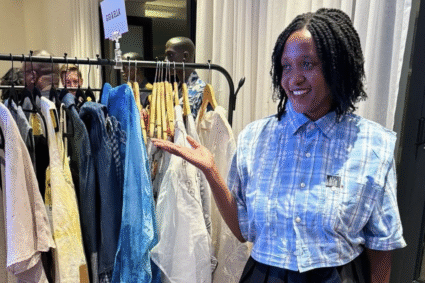The Midlands Arts Youth Fair dubbed MAY Fair created a hype in the laid-back city of Gweru on the 23rd of September at Milan Family Restaurant. This much-anticipated exhibition may have been the nudge or catalyst needed to awaken the artistic giant in the City of Progress. Exploring the artworks, inspiration, and challenges of young artists at the exhibition was an eye-opening experience. It was surreal to see artists and fans alike celebrating raw talent from surrounding locations. The expertly orchestrated exhibition and its vibrant atmosphere were a resounding success.
The exhibition was an exceptional family outing and well-attended. The lively buzz of children playing at the playcentre added to the festive atmosphere, and the venue catered to everyone’s needs.
The lineup for the event included poetry, dance battles, runway fashion shows, virtual gaming, and musical performances. The dance battle set the stage ablaze, with well-rehearsed choreography on display. The runway was enchanting, with female models swaying rhythmically to the music and male models strutting down the makeshift runway created in the restaurant. One of the models, Miss Ivy, was getting dolled up when I had a chance to speak to her. She was excited about the event, where she would have the opportunity to showcase her skills. Even though the models were tirelessly making final preparations for the Mavis Koslek-led Miss Gweru pageant, scheduled for the 30th, they mingled with fellow artists from various genres.
Surrounded by such great talent, I was overwhelmed with gratitude. The artists performed in unison, like a symphony, moving effortlessly between staccato, allegro, allegretto, and crescendo. It was a picturesque view of perfect harmony. Among the many visual artists was 14-year-old Kuziva Nzarambi from Northlea, who specializes in animations, shoes, and portraits. She sometimes dreams about her subjects, including Prophet Magaya’s pen artwork which she drew . Lil KD’s cousin, a technical drawing student, noticed her interest in art and taught her the basics when she was 10 years old. She has been drawing ever since. She is eager to be recognized by important people so she can showcase her talent. Her mother is her biggest cheerleader and inspiration, encouraging her to participate in the exhibition.
Arnold Mutanga known as GT could not pass the opportunity to present his designing, t-shirt and cap printing services and products. An Information Systems student at Midlands State University, GT began such projects to help him to inspire change. His recent project phrase “Gadzirisa Lyf” on caps and t-shirts is currently selling like hot cakes. His business partner sells his merchandise at the University of Zimbabwe, and he also has individual clients in Canada and the UK.
19-year-old Buhle Sibanda chose a portrait of her sister as one of her best pieces of pencilwork. Her interest in drawing blossomed from tracing images at 13 to drawing from photographs after just a few glances. Buhle’s sister, mother, and grandmother have been her source of strength. She is currently focused on her high school studies, but as soon as she finishes her final exams, she plans to concentrate on her artwork. She has a few unfinished drawings that she only gets to work on in the evenings when she has time. When asked where she sees herself artistically, she said that art is just her hobby, but she would like to have more exhibitions out of the country. Buhle’s first love remains Auto Electrical Engineering which is her career path.
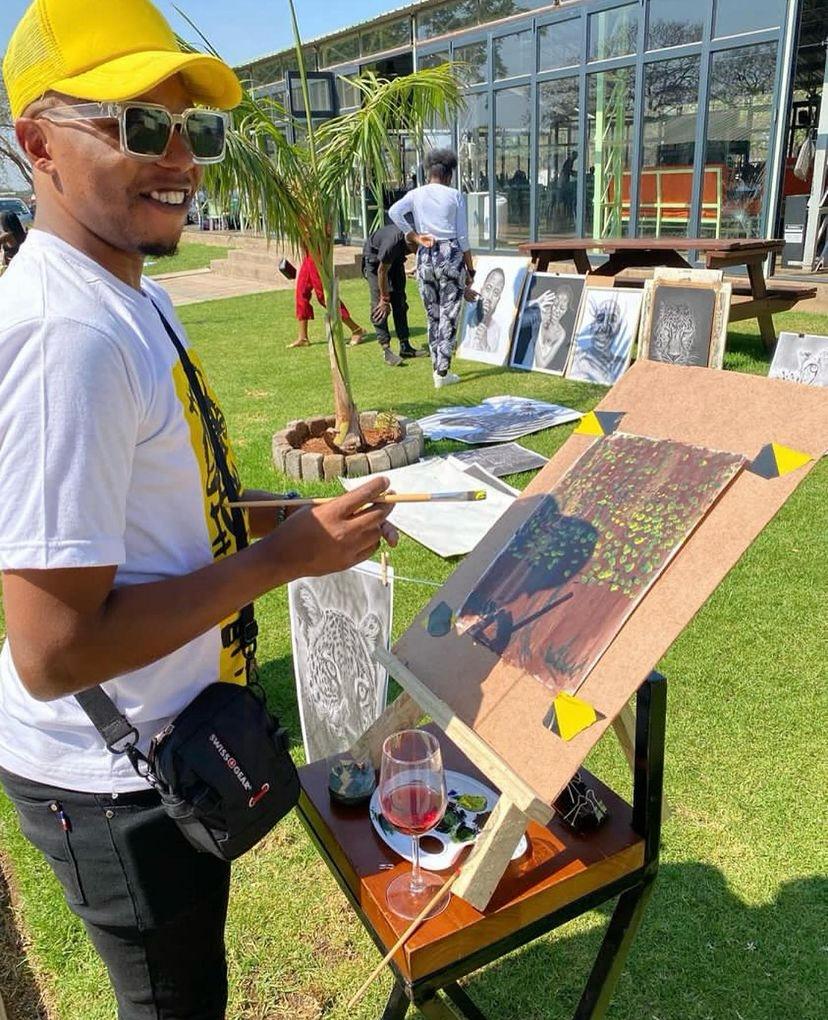

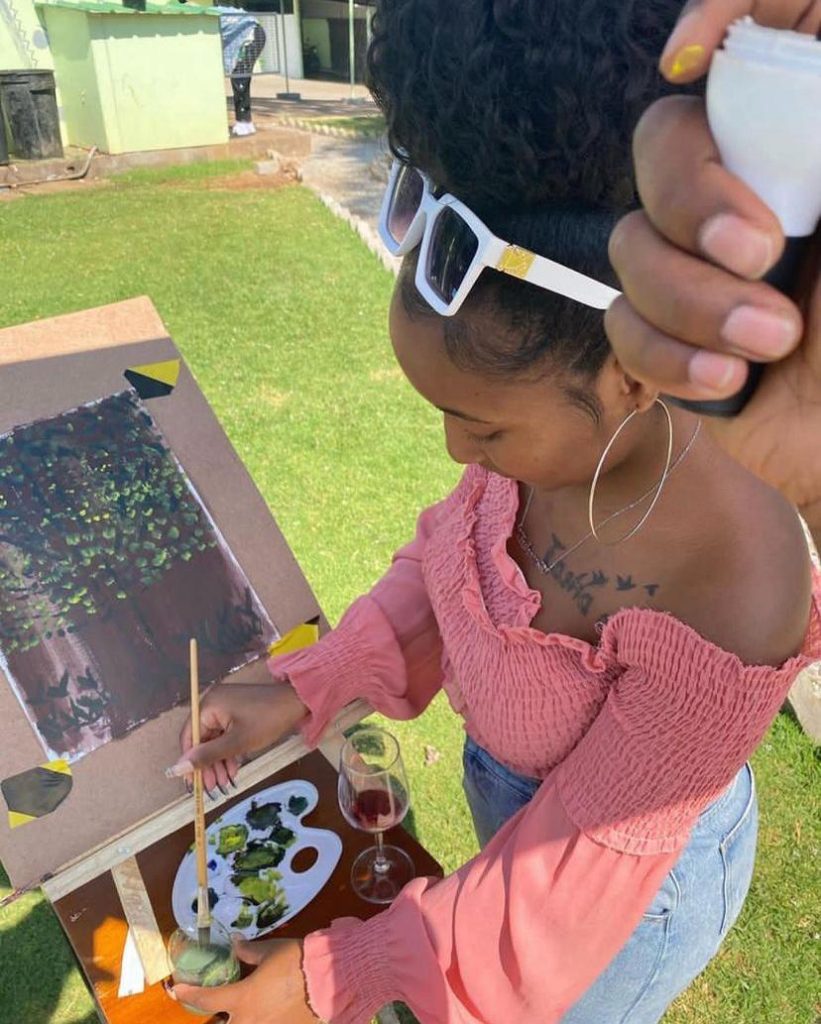
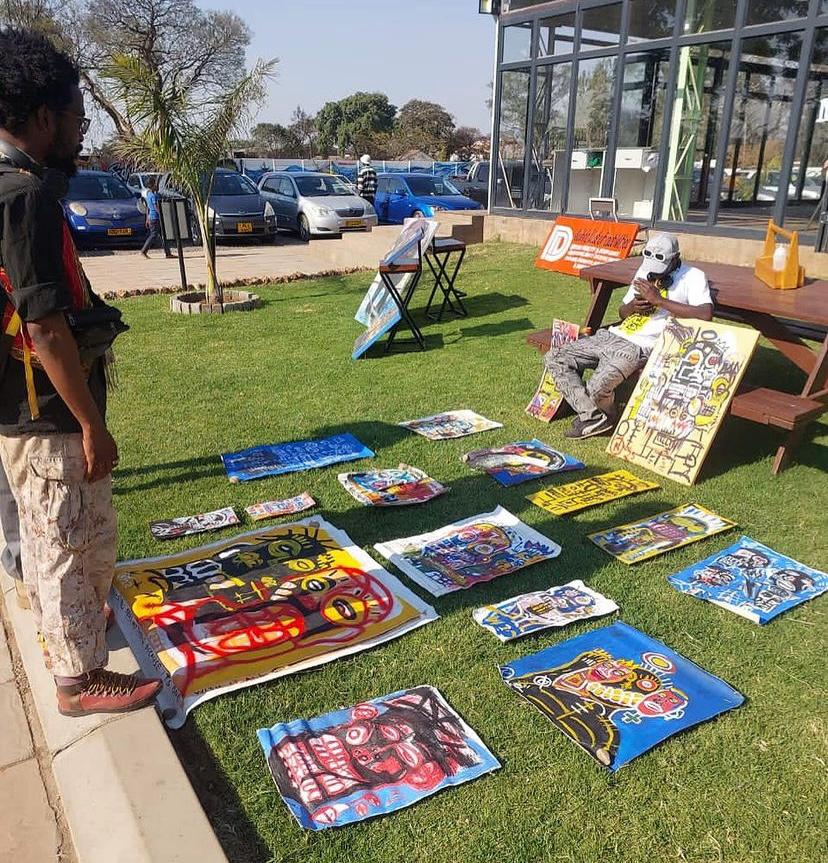
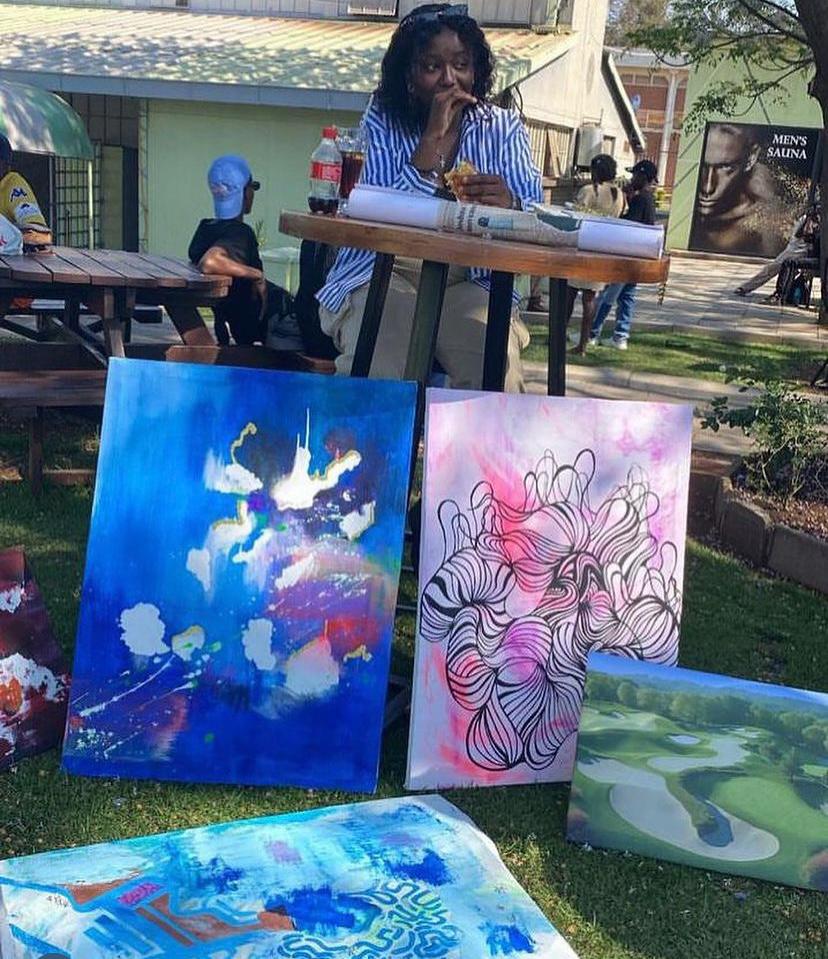
At the exhibition, a few stands were overcrowded with people eager to try their hand at creating their own masterpiece. Sip and Paint allowed participants to experience the artistic process while tantalizing their taste buds with a glass of red wine, for a small fee. After a brief masterclass from the artist, individuals worked on their pieces, which they took home to display proudly on their fireplaces.
Blessed Saini and Anopaishe Chiseva are young men who met at high school in the suburbs of Mkoba. Their styles border on realism and hyperrealism, using a mixed media of pencilwork, watercolor, and Prismacolor pencils. Their artistic paths were destined to meet, even though their journeys began in different circumstances. Blessed’s journey began in primary school, where his interest was in cartoon animations. He did some artwork at his school, which boosted his confidence when his work was recognized. Blessed said his first “real” artwork was his brother’s unfinished piece, which he had discarded. He finished the piece in 2016, and from then on, he became more serious about visual art. In 2019, Blessed broadened his interest to animal abstracts and portraits. Some of his exceptional pieces on display at the exhibition were portraits of Casper Nyovest and Mr. Taleb Mohamad.
Anopa said, “Growing up, I was a social outcast. I spent most of my time alone, and I found comfort in my art and drawing.” As a child, he loved drawing cartoons and comics that spoke out for or against different issues. His time alone gave him the space to reflect and put his thoughts on paper. “Art was a form of therapy for me—a perfect friend.”
In high school, Anopa met Blessed Saini, whose distinct art style introduced him to pencil realism. Anopa was mesmerized by Blessed’s portraits and learned the importance of originality from another artist friend, Tanaka Ndiraya. Inspired by cartoons like Tom and Jerry and Winnie the Pooh, Anopa began creating his own versions of these beloved characters. Today, Anopa Chiseva is a multimedia artist who uses pencil, pens, crayons, and digital art to create comics and graphic novels. Beyond friends and fellow artists, Anopa found it difficult to get support, especially in his early years in primary and secondary school, when his parents wanted him to focus on his schoolwork.
The future for visual arts is bright, but the journey to artistic freedom can be lonely. Artists need a good support system to encourage and inspire their creativity. “It was really hard convincing my parents that it pays because I had not yet sold a piece,” lamented Anopa. Some of his work was even burnt because his parents viewed it as useless clutter. Despite these challenges, Anopa remained dedicated to his art, and it eventually led him to a community of supportive friends. Art has opened up his world in many ways. Blessed’s parents support his work, and his brother, a pencil artist and painter, sometimes supplies him with materials.
While there were young women at the exhibition, it would be encouraging to see more take advantage of opportunities in the creative space. One young lady, a pencil artist from Adelaide Park, said she began to draw at age 10 when art was introduced at her school. I believe that everyone, boys and girls alike, can achieve anything they set their minds to. We must correct the outdated social perception that disqualifies girls from artistic excellence. Both genders can be vibrant in the arts, and communities must provide support for all aspiring artists.
Samantha Tinomutendaishe Chinyere began to draw simply as a form of therapy to help cope with life’s circumstances. She found relief from the stress and pressure of life. Samantha’s love for drawing flowers bloomed when she discovered it was something she enjoyed doing regularly. She is a self-taught artist who found a book about flowers and began to explore her passion. Her drawings are in pencil, but she recently discovered the beauty of painting flowers, which allows her to maintain their natural colors.
Austin, known artistically as Kreota, is a multidisciplinary artist who works across visual art and photography. His pieces are primarily based on emotions brought about by self-reflection. The various colors in his paintings do not necessarily depict specific emotions, but the blues and reds can carry similar interpretations, depending on the individual viewer. Kreota began his artistic journey two years ago when he painted on a t-shirt as a sample. He has since created most of his paintings in the studio of a friend, who is a wildlife artist who provides Kreota with materials and support. While Kreota’s family is supportive, they do not fully understand the meaning of his paintings, although some are becoming more interested. Kreota believes that his unique style must speak for itself.
Carrel Kumbirai received his first affirmation as an artist at the age of 16, when he was selected to exhibit his work outside of the country. This led to television interviews and public recognition. He spoke primarily about the importance of artists’ growth and the need to invest in building their brands. Even though the arts industry can be lucrative, Kumbirai encouraged artists to continue participating in exhibitions to advertise and market their work. He said, “I ask myself, ‘Am I gaining something from this? Where is this heading? I look at the previous exhibition and ask, who did I meet? Did they talk to me? What did I learn?”
The first edition of MAY Fair provided a much-needed platform for artists to showcase their work. Mr Taleb Mohamad sincerely spoke about his desire to empower artists through any means possible, especially nurturing them and celebrating their hard work. He said that this event was the beginning of more events lined up in supporting local artists of all genres in Gweru.
Seasoned visual artist Keith Zenda and National Arts Council director Madam Honour Muvhango found time after the Musasa Arts and Culture artists auditions, to attend the exhibition and encouraged artists to work hard so that they achieve their goals. Keith Zenda who was recently in South Korea for various exhibitions is assisting visual artists in Gweru and Lower Gweru through mentorship programs and a space for creativity.
Artists at the exhibition noted two main challenges: lack of exhibition space for solo exhibitions and difficulty accessing materials. Blessed, who has many pieces that he couldn’t bring to the exhibition, remains passionate about expressing himself and making sure his voice is heard through his art. Artists must travel to Harare, Bulawayo, or outside of Zimbabwe to purchase materials, which can be expensive and time-consuming. Lack of access to proper materials can hinder artists’ ability to create their best work. Gweru’s artists are limited to bond and manila paper, which are not ideal for visual art. A local entrepreneur could fill a need by establishing a company that provides art supplies. Gweru must take ownership of its arts scene before the city becomes a mere training ground for raw talent that is appreciated and nurtured elsewhere. Involuntary migration to better-equipped cities like Harare, Bulawayo, or Mutare will persist if communities remain idle.
A major take-away for artists is to grow networks with fellow artists and the local arts governing board. This will assist in broadening the reach because one may draw fancy pictures but without a market it’s a waste of time. Dreams can remain unrealized for years due to a lack of resources. We need more platforms to showcase talent and foster creativity. With these resources, the city of progress can become an oasis of endless creativity. Gratitude goes to Milan Family Restaurant for awakening the artistic giant within the city and providing an eye-opening experience.


